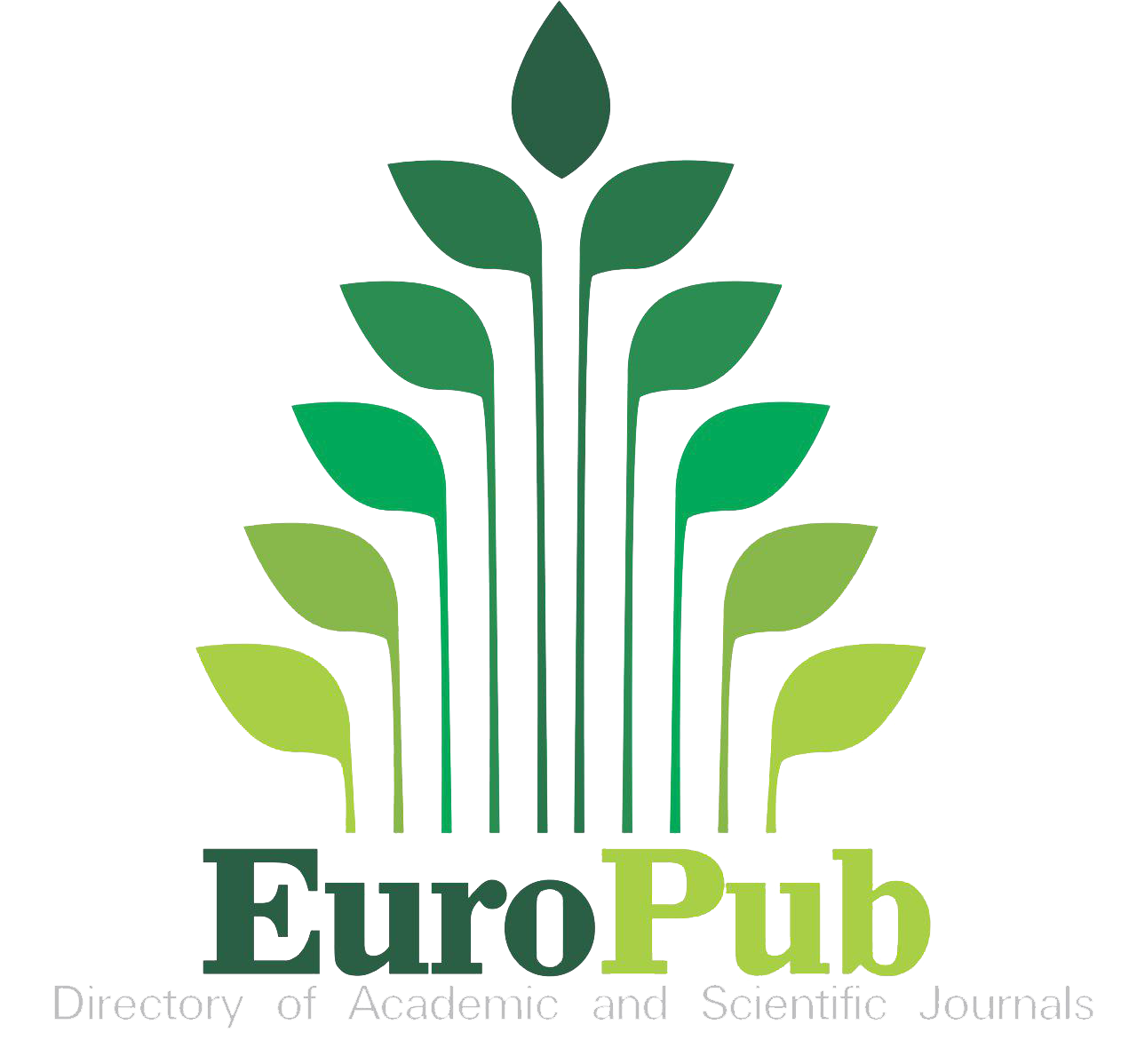Improving Tomato Juice Preservation: The Role of Ginger, Garlic, and Lemon Extracts
DOI:
https://doi.org/10.54536/ajfst.v4i1.3929Keywords:
Antioxidant Activity, Natural Plant Extracts, Preservatives, Shelf-LifeAbstract
Tomato juice was successfully produced and treated with 3 different plant extracts and their combinations. The study had 9 samples, Sample TJ being the control (without preservative), and sample TSB (with sodium benzoate). The remaining samples were treated with 1 % of the extracts and their combinations as follows: TZ (1 % Ginger), TA (1 % Garlic), TC (1 %Lemon), TZA (1 % Ginger+Garlic), TZC (1 % Ginger+Lemon), TAC (1 % Garlic+Lemon) and TZAC (1 % Ginger+Garlic+Lemon). The samples were analyzed for phytochemical and antioxidant activity and also subjected to storage studies, during which pH, TTA, TSS, and microbial counts were evaluated. The total phenolic content ranged from 1.50 to 2.80 mgGAE / 100 ml, the total flavonoid content ranged from 1.02 to 1.22 mgQE / 100 ml, and the FRAP values ranged from 1.23 to 4.76 mgAAE / 100 ml. For storage studies, pH and TSS decreased with storage time while TTA and microbial load increased accordingly. However, the microbial load of the samples was within the limits recommended by ICMSF. It can be concluded that tomato juice can be conveniently preserved with natural plant extracts which give the juice improved nutrients, antioxidant activity, and a relatively stable shelf life.
Downloads
References
Adekalu, A. O., Olatunde, I. G., Echendu, B. M., Adepoju, T. C., & Fajemisin, O. O. (2009). Antimicrobial and preservative activities of Allium sativum and Eugenia aromatica on fresh tomato puree. African Journal of Agricultural Research, 4(2), 139–140.
Aderinola, T. A. (2018). The Impacts of Lemon Juice on the Physicochemical and Antioxidant Properties of Smoothies. Annals of Food Science and Technology, 19(4), 675–683.
Adubofuor, J., Amankwah, E. A., Arthur, B. S., & Appiah, F. (2010). Comparative study related to physico-chemical properties and sensory qualities of tomato juice and cocktail juice produced from oranges , tomatoes and carrots. African Journal of Food Science, 4(7), 427–433.
Alam, M. K., Hoque, M. M., Morshed, S., Akter, F., & Sharmin, K. N. (2013). Evaluation of Watermelon (Citrullus lanatus) Juice Preserved with Chemical Preservatives at Refrigeration Temperature. Journal of Scientific Research, 5(2), 407–414. https://doi.org/10.3329/jsr.v5i2.12181
Ameh, B. A., Gernah, D. I., Obioha, O., & Ekuli., G. K. (2015). Production, quality evaluation and sensory acceptability of mixed fruit juice from pawpaw and lime. Food and Nutrition Science, 6, 532–537.
AOAC. (2015). Official methods of analysis (18th ed.). Association of Official Analytical Chemists.
Arawwawala, M., & Hewageegana, sujatha. (2017). Health Benefits and Traditional Uses of Honey: A Review. Journal of Apitherapy, 2(1), 9.
Bhati, D., & Raghuvanshi, R. S. (2021). Nutritional analysis of raw and processed ginger and its products. Journal of Pharmacognosy and Phytochemistry, 10(1), 5–7.
da Silva, N. K. V., Sabino, L. B. de S., Oliveira, L. S. de, Torres, L. B. de V., & de Sousa, P. H. M. (2016). Effect of food additives on the antioxidant properties and microbiological quality of red guava juice. Revista Ciencia Agronomica, 47(1), 77–85.
Deedam, N. J., China, M. A., & Wachukwu, H. I. (2020). Proximate Composition, Sensory Properties and Microbial Quality of Chin-chin Developed from Wheat and African Walnut Flour Blends for Household Food Security. European Journal of Nutrition & Food Safety, 12(8), 45–53. https://doi.org/10.9734/ejnfs/2020/v12i830260
Ekanem, J. O., & Ekanem, O. O. (2019). The effect of natural and artificial preservatives and storage temperature on the pH and microbial load of freshly produced apple (Malus domestica) juice. Agro-Science, 18(1), 16. https://doi.org/10.4314/as.v18i1.3
El-Hanafy, A. E. A. (2014). Using garlic as a natural preservative in minced catfish (Clarias gariepinus) during cold storage. Abbassa International Journal of Aquaculture, 7(2), 291–313.
El-Saadony, M. T., Elsadek, M. F., Mohamed, A. S., Taha, A. E., Ahmed, B. M., & Saad, A. M. (2020). Effects of chemical and natural additives on cucumber juice’s quality, shelf life, and safety. Foods, 9(639), 1–17. https://doi.org/10.3390/foods9050639
El-Sayed, A. A., Rabie, M. A., Abu El-Maaty, S. M., & El-Nemr, S. E. A. (2018). Fermented tomato juice (Lycopersicon Esculentum Mill.) produced via lactic acid bacteria during cold storage. Carpathian Journal of Food Science and Technology, 10(1), 5–18. https://doi.org/10.13140/RG.2.2.28590.41287
Jacob, A., Mohite, A., & Ahmed, S. S. (2017). Physicochemical analysis of fruit juice using a self-made low-cost portable ohmic heater. International Journal of Agriculture, Environment, and Biotechnology, 10(4), 740–747.
Mahmud, R., Islam, N., Inan, A. K. M. S., & Roy, D. C. (2009). Studies of the varieties effect on the prepared tomato juice. Bangladesh Research Publication Journal, 3, 787–795.
Mshelia, B. M., Adeshina, G. O., & Onaolapo, J. A. (2018). The antibacterial activity of honey and lemon juice against Streptococcus pneumoniae and Streptococcus pyogenes isolates from respiratory tract infections. Acta Scientiae Microbiologiae. https://bit.ly/3eeeRBz
Ndife, J., Onyeiwu, S. C., Ubbor, S. C., & Ukor, I. C. (2022). Development and Comparative Evaluation of Juices from Selected Functional Ingredients. Science World Journal, 17(2), 315–320. www.scienceworldjournal.org
Ogori, A. F., Amove, J., Aduloju, P., Sardo, G., Okpala, C. O. R., Bono, G., & Korzeniowska, M. (2021). Functional and quality characteristics of ginger, pineapple, and turmeric juice mix as influenced by blend variations. Foods, 10(3), 1–15.
Okokon, E. J., & Okokon, E. O. (2019). Proximate analysis and sensory evaluation of freshly produced apple fruit juice stored at different temperatures and treated with natural and artificial preservatives. Global Journal of Pure and Applied Sciences, 25(1), 31. https://doi.org/10.4314/gjpas.v25i1.5
Olalekan, O., Francis, G. A., Chinyelu, N., Ebele, I., Olalekan, O. A., & Babatunde, A. (2017). Effect of Preservatives on the Physicochemical Properties of Watermelon and Soursop Fruit Blend. Direct Research Journal of Agriculture and Food Science, 5(10), 333–337. https://doi.org/10.26765/DRJAFS.2017.8912
Olaniran, A., Abu, H., Afolabi, R., Okolie, C., Owolabi, A., & Akpor, O. (2020). Comparative assessment of storage stability of ginger-garlic and chemical preservation on fruit juice blends. Potravinarstvo Slovak Journal of Food Sciences, 14(February), 88–94. https://doi.org/10.5219/1262
Olaniran, A. F., Abose, S. H., & Gbadamosi, S. O. (2013). Effect of Ginger and Garlic as Biopreservatives on Proximate Composition and antioxidant Activity of Tomato Paste. Ife Journal of Technology, 22(1), 15–20.
Olaniran, A. F., Afolabi, R. O., Abu, H. E., Owulabi, A., Iranloye, Y. M., Okolie, C. E., & Akpor, O. B. (2020). Lime potentials as biopreservative as alternative to chemical preservatives in pineapple, orange and watermelon juice blend. Food Research, 4(6), 1878–1884. https://doi.org/10.26656/fr.2017.4(6).057
Ordonez, A. A. L., Gomez, J. D., & Vattuone, M. A. (2006). Antioxidant activities of Sechium edule (Jacq.) Swartz extracts. Food Chem, 97, 452–458.
Shaikh, S. M., Doijad, R. C., Shete, A. S., & Sankpal, P. S. (2016). A Review on: Preservatives used in Pharmaceuticals and impacts on Health. PharmaTutor, 4(5), 25–34. http://www.pharmatutorjournal.com/index.php/pt/article/view/355
Sharmin, T., Kabir, F. N.-A., Ahmed, N., Palleb, M. S. R., & Bristi, N. D. (2019). Effect of chemical preservatives on the shelf life of tomato juice. Acta Chemica Malaysia, 3(2), 1–13. https://doi.org/10.2478/acmy-2019-0006
Škerget, M., Kotnik, P., Hadolin, M., Hraš, A. R., Simoniˇc, M., & Knez, Ž. (2022). Phenols, proanthocyanidins, flavones, and flavonols in some plant materials and their antioxidant activities. Food Chem, 89, 191–198.
Ullah, N., Qazi, I. M., Masroor, S., Ali, I., Khan, A., Khan, M., & Gillani, A. (2015). Preservation of Ready to Serve Blended Carrot and Kinnow (Mandarin) Drink by Ginger Extract. Journal of Food Processing & Technology, 06(04). https://doi.org/10.4172/2157-7110.1000438
Vichaibun, V., & Kanchanaphu, P. (2019). Study on the Effects of Lemon Juice on Chemical and Functional Properties of Some Fruit Juices. Acta Universitatis Cibiniensis. Series E: Food Technology, 23(2), 187–192. https://doi.org/10.2478/aucft-2019-0022
Wern, K. H., Hasnah, H., & Chan, B. K. (2017). Comparison of total phenolic contents (TPC) and antioxidant activities of fresh fruit juices, commercial 100% fruit juices and fruit drinks. Sains Malaysiana, 45(9), 1319–1327.
Yakum, K. N., Ariahu, C. C., Ariahu, E. C., & Igoli, J. O. (2024). Physicochemical Properties of Fortified Coconut Milk Based Chocolate - Like Drinks as Influenced by Cocoa Powder and Sugar Levels. American Journal of Food Science and Technology, 3(1), 19–29. https://doi.org/10.54536/ajfst.v3i1.2573
Yusuf, A., Fagbuaro, S. S., & Fajemilehin, S. O. K. (2018). Chemical composition, phytochemical and mineral profile of garlic (Allium sativum). Journal of Bioscience and Biotechnology Discovery, 3(5), 105–109. https://doi.org/10.31248/jbbd2018.073
Downloads
Published
How to Cite
Issue
Section
License
Copyright (c) 2025 Ayong Mary Assumpta Fulai, Ndi Betrand Bongjo, Ogbene Gillian Igbum

This work is licensed under a Creative Commons Attribution 4.0 International License.







